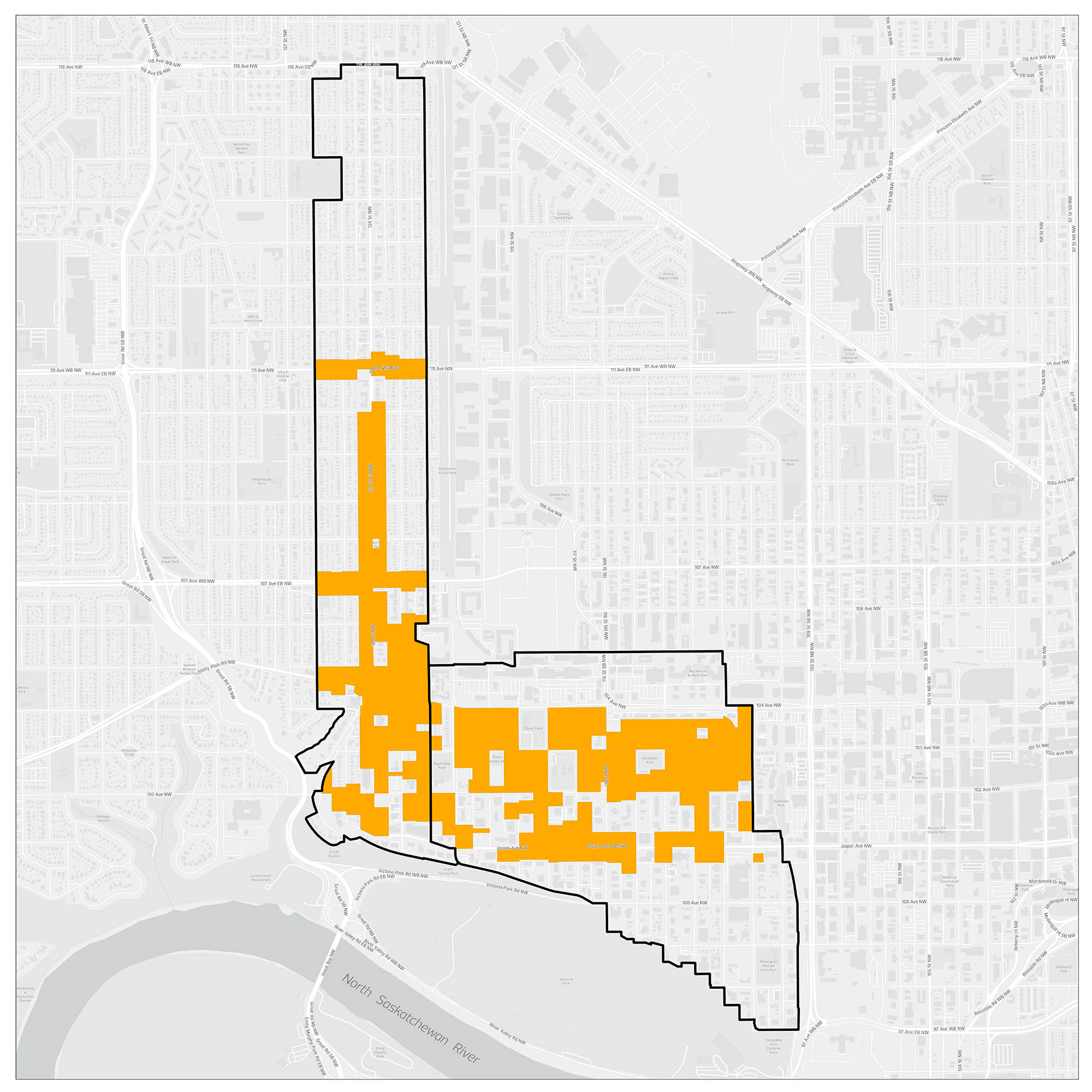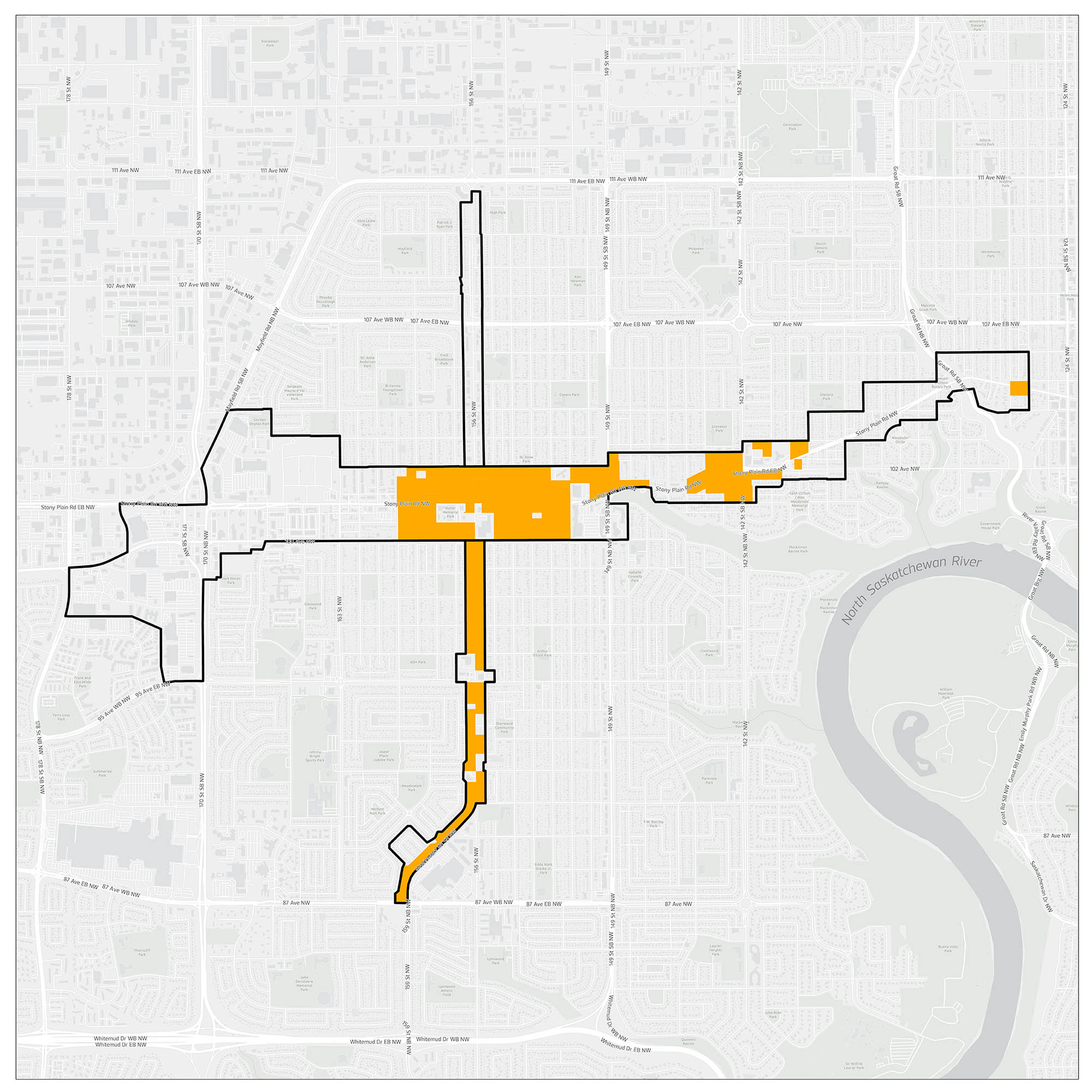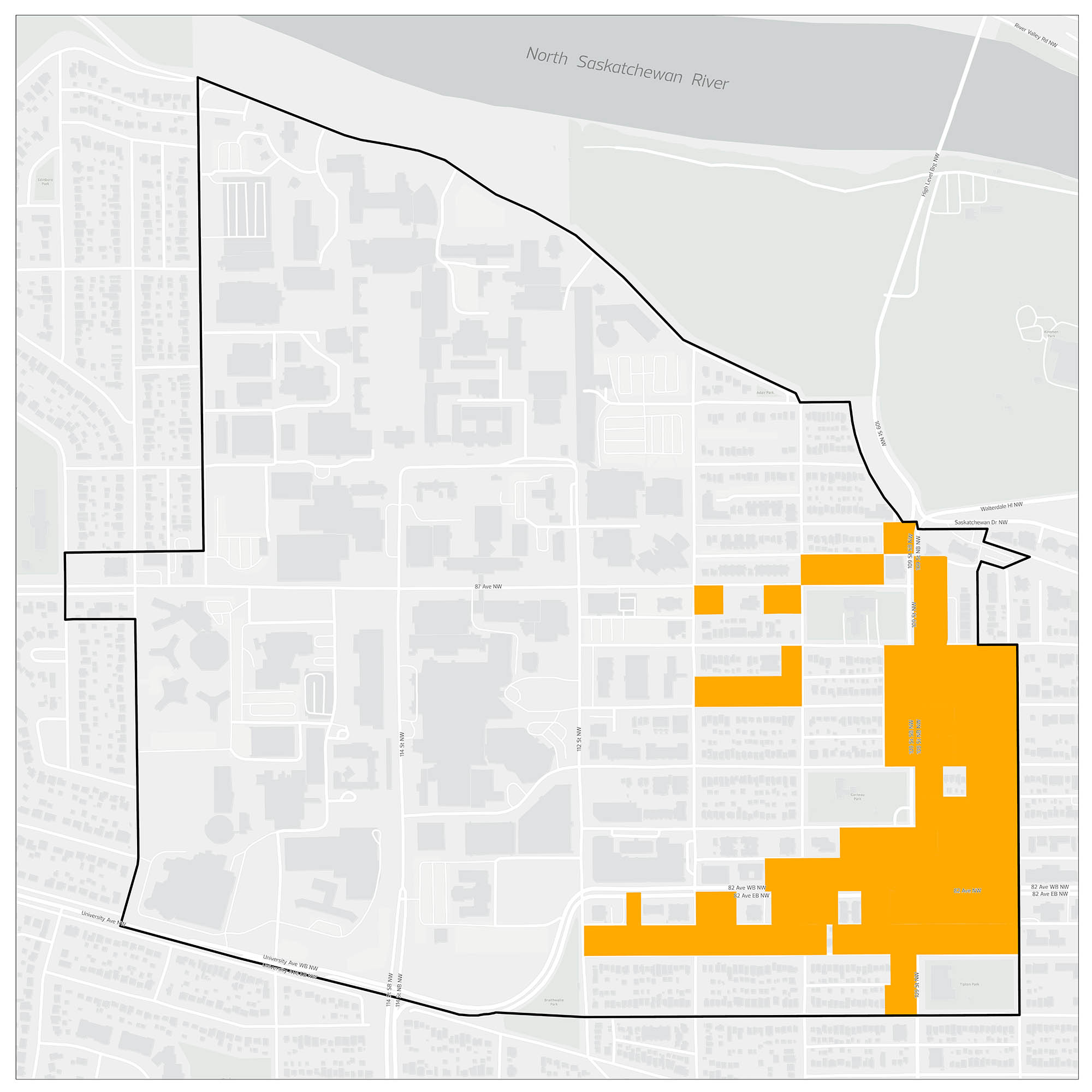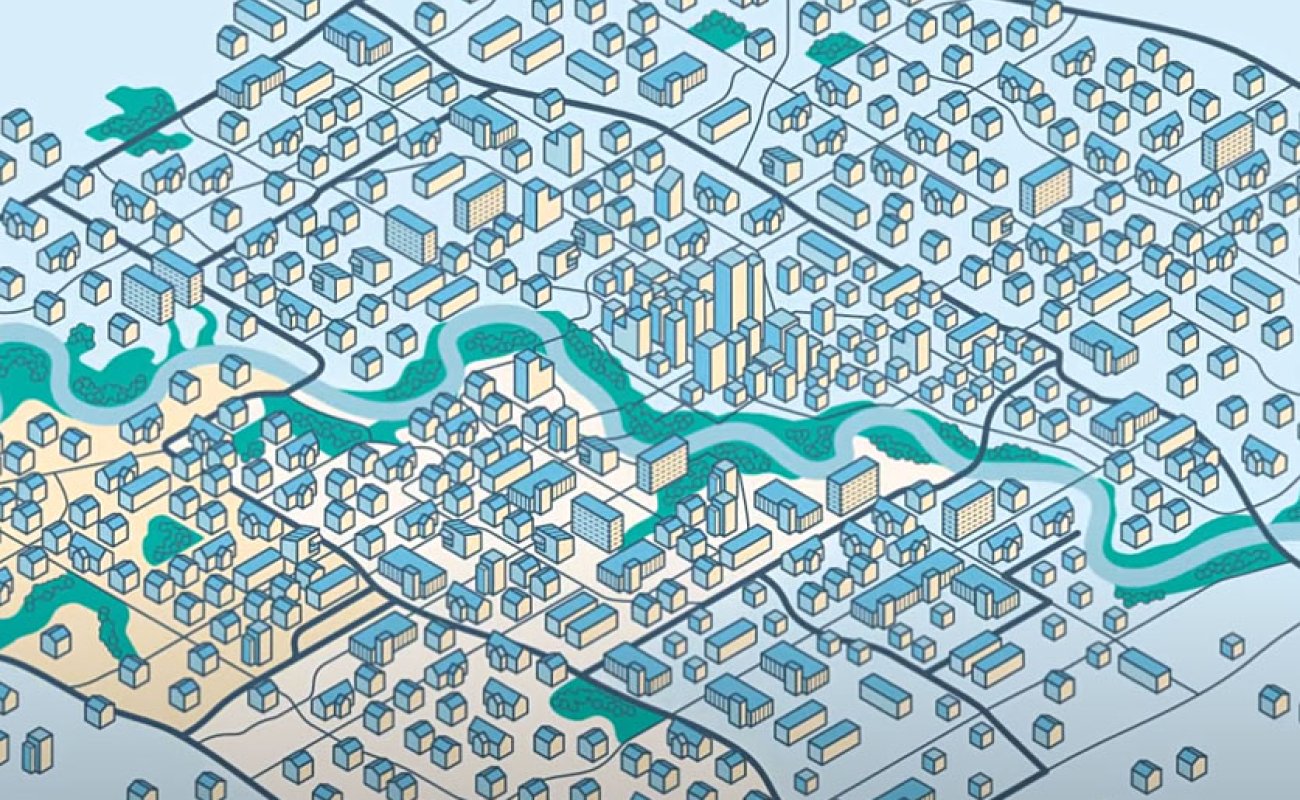City Council has approved City-driven rezonings in five key node (urban centre) and corridor (main street) areas to leverage existing transit investment and encourage more housing opportunities and business development.
The areas selected were:
- Wîhkwêntôwin Node and 124 Street Corridor
- 156 Street and Stony Plain Road Corridors
- University-Garneau Node
Creating a strong system of nodes and corridors that encourages transit-oriented development is an important part of creating a healthy, urban, climate-resilient city where Edmontonians have access to a variety of housing and transportation options and can easily meet their daily needs close to home.
Project Status
Current
Not all land within the 5 selected areas was rezoned. The rezonings focused on sites that have the greatest redevelopment potential, such as those located directly along corridors or within close proximity to mass transit.
The sites and the associated recommended standard zones and zone modifiers, were informed by a variety of factors, including:
- Local context and feedback received during two rounds of Advise-level public engagement in summer 2024 and fall 2024
- Technical studies (water, drainage, transportation, and other factors)
- Policy considerations (alignment to The City Plan, applicable district plans, and other policies)
The proposed rezonings were approved on May 20, 2025 and are now in effect. It is still up to individual property owners to bring forward development proposals to the City for review.
Rezoning will not guarantee development due to the many considerations that go into development and buildings/homes may remain on properties in perpetuity. Removing the rezoning barriers is intended to help shorten and streamline the process when an application is submitted.
Homeowners can remain in their homes for as long as they want. No one will be required to leave and/or sell their homes.
Wîhkwêntôwin Node and 124 Street Corridor
You can view the approved proposal for the Wîhkwêntôwin Node and 124 Street Corridor below.
Interactive Rezoning Map
You can also search for a specific property using the interactive rezoning map to find out what new standard zones and zone modifiers have been approved.
Why These Areas?
Learn more about the Wîhkwêntôwin (Oliver) Node and the 124 Street Primary Corridor and why they were selected.
Thank you to everyone who provided feedback on the Priority Growth Area rezonings. Feedback received at each stage was used to help inform the set of sites proposed for rezoning as well as the standard zones and zone modifiers for each selected site. Summaries for each phase’s feedback and resulting impact can be found below.
Fall 2024 Engagement
Summer 2024 Engagement
156 Street and Stony Plain Road Corridors
You can view the approved proposal for the 156 Street and Stony Plain Road Corridors below.
- Final Rezoning Proposal
- Zone map (zoomed in 156 Street corridor, 156 Street and Stony Plain Road, 142 Street and Stony Plain Road)
- Commercial frontage map (zoomed in)
Interactive Rezoning Map
You can also search for a specific property using the interactive rezoning map to find out what standard zones and zone modifiers have been approved.
Why These Corridors?
Learn more about the 156 Street and Stony Plain Road Corridors and why they were selected.
Thank you to everyone who provided feedback on the sites proposed for rezonings. Feedback received at each stage was used to help inform the set of sites proposed for rezoning, as well as the standard zones and zone modifiers for each selected site. Summaries for each phase’s feedback and resulting impact can be found below.
Fall 2024 Engagement
Summer 2024 Engagement
University-Garneau Node
You can view the approved proposal for the University-Garneau Node below.
Interactive Rezoning Map
You can also search for a specific property using the interactive rezoning map to find out what new standard zones and zone modifiers have been approved.
Why This Node?
Learn more about the University-Garneau Major Node and why it was selected.
Thank you to everyone who provided feedback on the sites proposed for rezonings. Feedback received at each stage was used to help inform the set of sites proposed for rezoning, as well as the standard zones and zone modifiers for each selected site. Summaries for each phase’s feedback and resulting impact can be found below.
Fall 2024 Engagement
Summer 2024 Engagement
Overview
On April 12 2022, the Urban Planning Committee directed the City to pursue proactive rezonings in these areas (see item 6.2) and a plan for this work was presented to the Urban Planning Committee on February 27, 2024 (see item 7.4). City Council approved the rezonings on May 20, 2025.
Using targeted, City-initiated rezoning to proactively align certain nodes and corridors with The City Plan vision will help encourage more housing and business investment in these important Priority Growth Areas.
The benefits of proactive rezoning include:
- Creating more certainty for applicants and the surrounding community on what types of developments will be encouraged and supported in these areas
- Reducing the costs and risks associated with developer-initiated rezonings, which helps streamline the development process and make it easier to build new homes and businesses
- Unlocking land supply in our existing neighbourhoods to incentivize the development of a wider range of housing options and more diverse economic and employment opportunities
- Proactively identifying infrastructure such as water, drainage and transportation considerations to support the increased density enabled by the proposed rezonings
Priority Growth Area Selection
The City used a 2-phased process to create the shortlist of candidate Priority Growth Areas for targeted rezonings.
This process involved a technical review to evaluate all 19 Priority Growth Areas based on opportunities to implement The City Plan, existing land use conditions and market factors.
Following the technical review, targeted engagement with development industry groups, citizen-appointed advisory committees and the Edmonton Federation of Community Leagues (EFCL) helped further refine the shortlist to the final 5 selected.
Site and Zone Selection
Once the 5 Priority Growth Areas were selected, the City used public input, technical studies and policy considerations to:
1. Validate which sites within these areas should be rezoned.
2. Determine which new standard zones to rezone the chosen sites to in order to catalyze demand and investment in alignment with The City Plan direction.
Public Hearing and Final Rezoning
The proposed rezonings were approved following a Public Hearing on May 20, 2025. The rezonings are now in effect.





